2,000-year-old Roman sanctuary — and nearby burial ground — uncovered in France
Empty tombs where skeletons had long since dissolved. A ditch where devoted offerings deteriorated. Traces of the Roman empire’s rule over western France echoing through the ages.
These traces of faded glory reemerged as archaeologists excavated an area of La Chapelle-des-Fougeretz, the French National Institute for Preventive Archaeological Research said in an April 4 news release.
La Chapelle-des-Fougeretz is a small city near Rennes and about 210 miles southwest of Paris. Rennes was established by the Roman empire around the end of the first century B.C., French officials reported in an archaeological atlas for the area.
Archaeologists found evidence of an important Roman occupation site at La Chapelle-des-Fougeretz, the release said. The ruins included a sanctuary, thermal bathhouse and burial ground.
The roughly 2,000-year-old sanctuary was dedicated to Mars, the Roman god of war, and built at the start of the Roman period, experts said. A statue of Mars and numerous weapons, such as swords and spearheads, were unearthed at the sanctuary. The weapons were likely left as offerings by devoted soldiers.
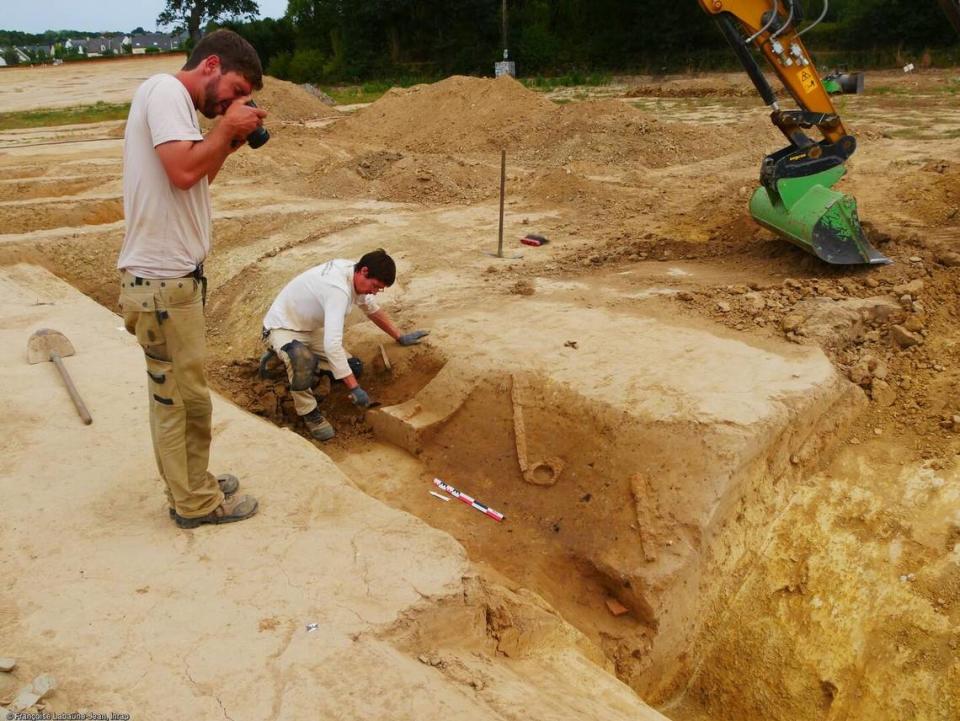
The nearby thermal bathhouse was a wooden, public building, archaeologists said. Everyday objects, such as pottery, were buried there.
A short distance away, archaeologists located a burial ground, or necropolis, a relatively unexpected find, the release said. The burial ground had 40 tombs. Photos show a few of these long, rectangular graves.
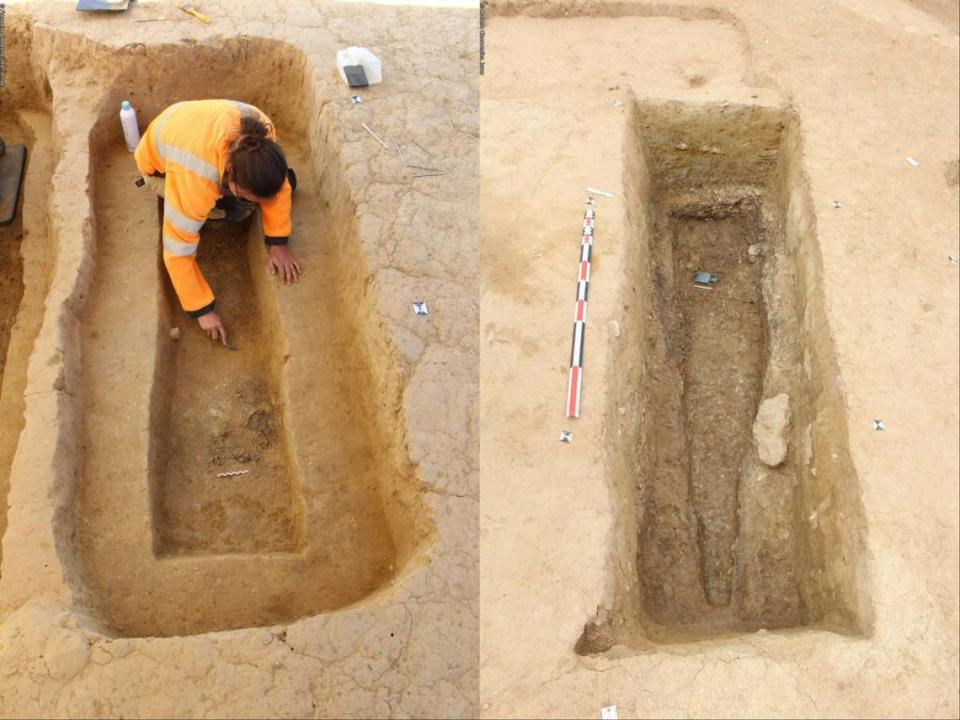
The necropolis was about 1,500 years old and used during the third and fourth centuries, experts said. By the fourth century, the entire site was abandoned.
No skeletons were found at the necropolis, archaeologists said. The bones had dissolved in the acidic soil, but traces of the occupants lingered in the form of grave goods.
The studded soles of a pair of shoes were unearthed in one tomb, experts said and photos show. Another person was buried with glass and ceramic vases. Someone else’s tomb had rich items, including silver bracelets, pins and belt buckles. In another grave, a dagger and parts of a horse harness were unearthed.
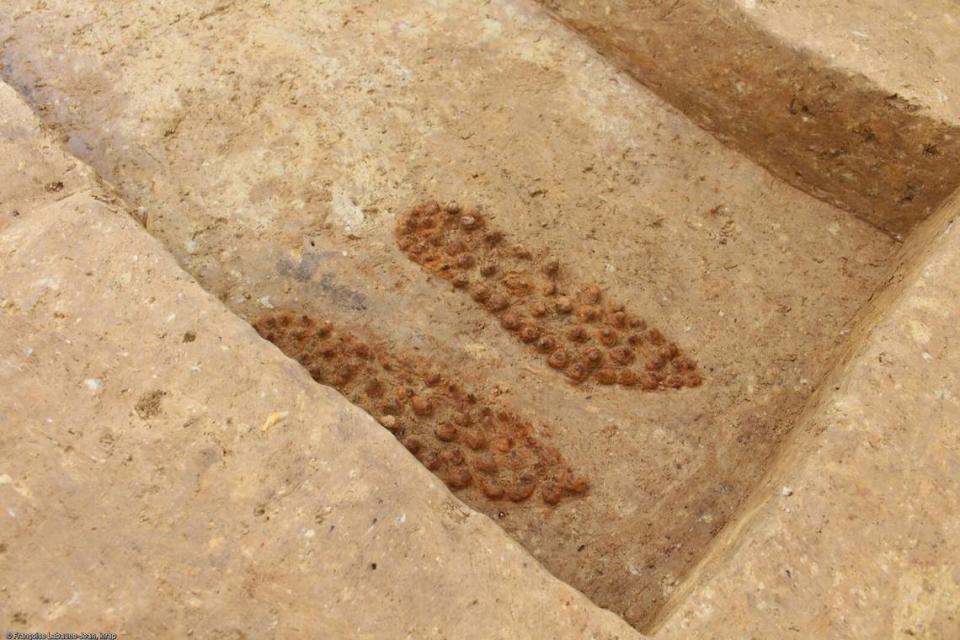
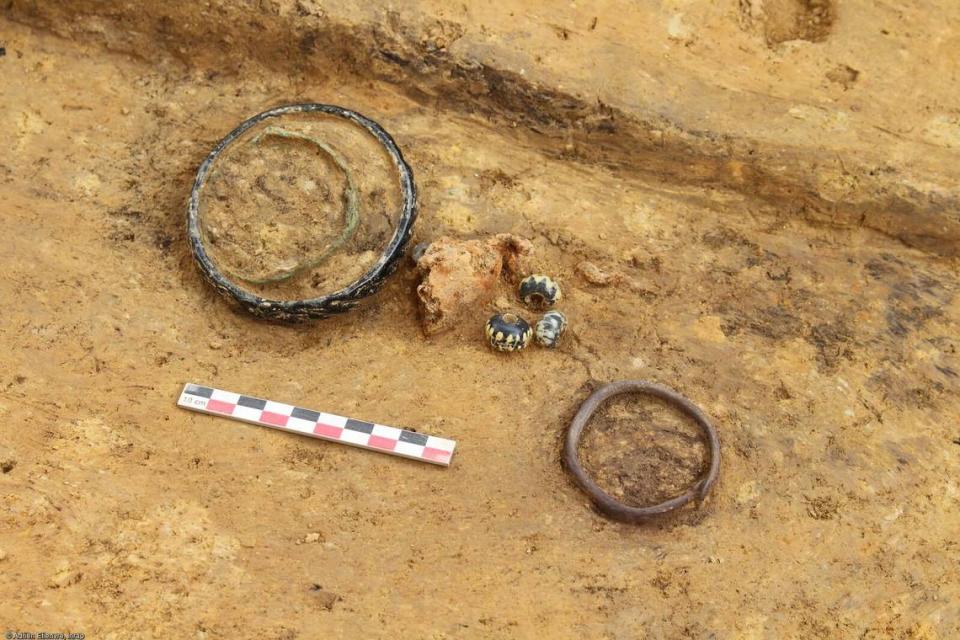
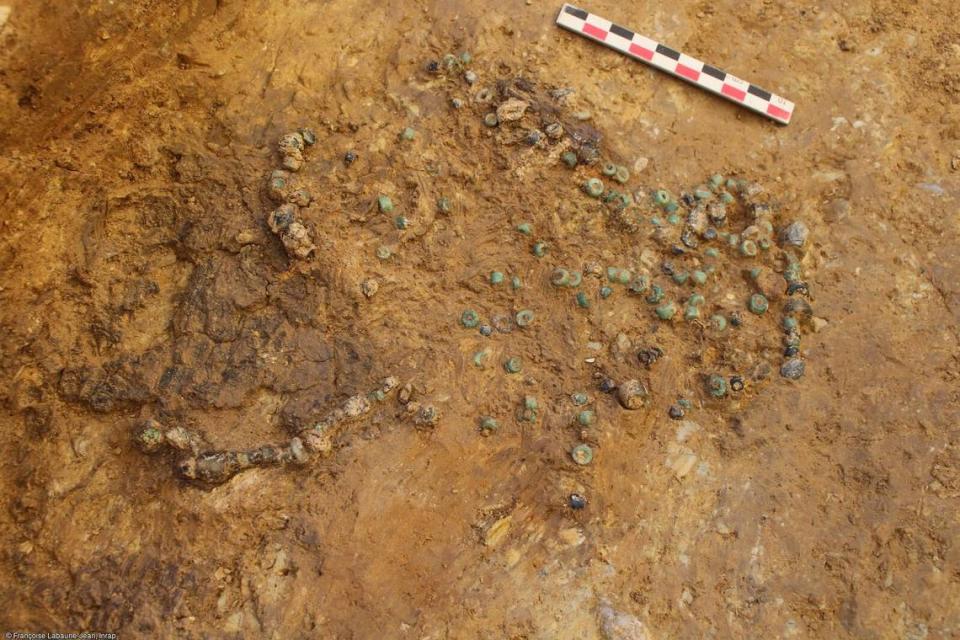
After excavating the site, archaeologists did an inventory of their finds and took the items to a laboratory for further study, the release said. All told, they found seven pieces of terracotta architectural elements, 35 pieces of pottery, 12 iron swords, 4 billhooks, a sickle and over 700 other artifacts.

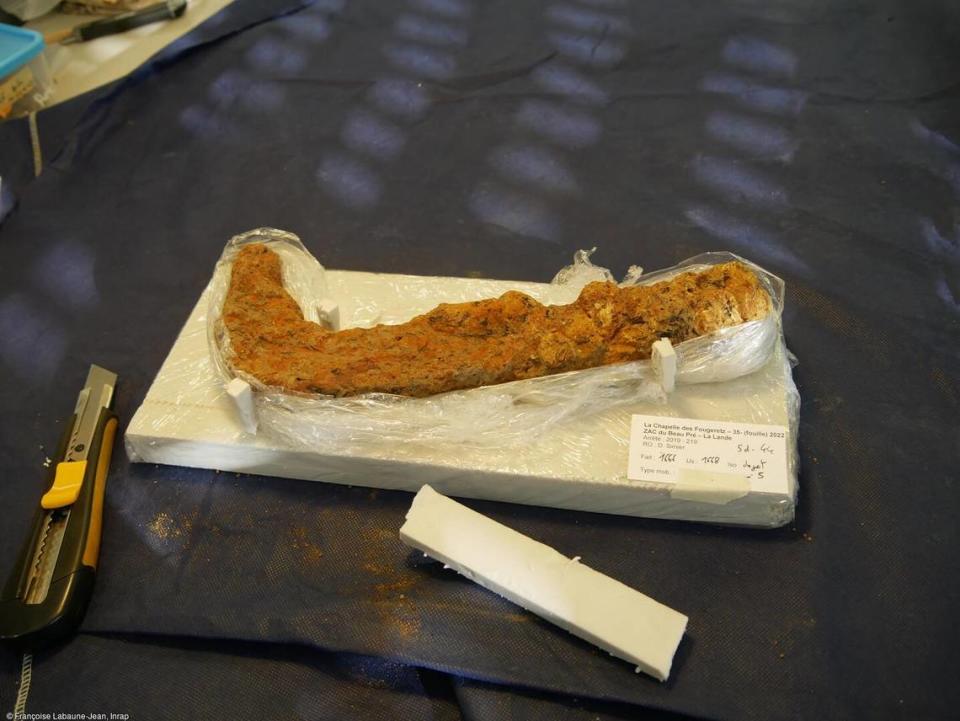
About half of the ancient weapons were found at a ditch near the sanctuary, and the other half were found at the burial grounds.
The metal finds will require special treatment for preservation, the study said. Research on the artifacts is ongoing.
Google Translate was used to translate the news release and archaeological atlas from the French National Institute for Preventive Archaeological Research (INRAP).
Abandoned mine — turned Roman rubbish dump — reveals life in France 1,800 years ago
1,900-year-old Roman fortress — along the empire’s edge — unearthed in UK, photos show
3,000-year-old severed hands found buried in pharaoh’s courtyard, archaeologists say

